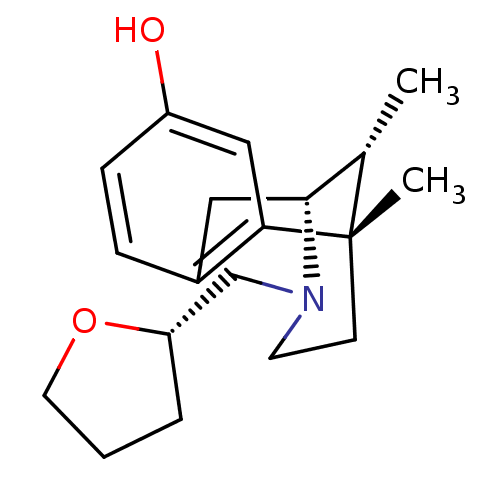Affinity DataKi: 0.170nMAssay Description:Binding affinity towards Opioid receptor mu 1 from guinea pig brain using [3H]DAMGO as radioligandMore data for this Ligand-Target Pair
Affinity DataKi: 0.170nMAssay Description:Displacement of [3H]DAMGO from MOR in guinea pig brain membranes after 60 mins by scintillation counting methodMore data for this Ligand-Target Pair
Affinity DataKi: 0.190nMAssay Description:Displacement of [3H]DAMGO form mu opioid receptor in guinea pig brainMore data for this Ligand-Target Pair
TargetMu-type opioid receptor(Homo sapiens (Human))
Rensselaer Polytechnic Institute
Curated by ChEMBL
Rensselaer Polytechnic Institute
Curated by ChEMBL
Affinity DataIC50: 17nMAssay Description:Activity at human cloned mu opioid receptor expressed in CHO cells assessed as inhibition of DAMGO-induced [35S]GTPgammaS bindingMore data for this Ligand-Target Pair
TargetMu-type opioid receptor(Homo sapiens (Human))
Rensselaer Polytechnic Institute
Curated by ChEMBL
Rensselaer Polytechnic Institute
Curated by ChEMBL
Affinity DataEC50: 2.70nMAssay Description:Activity at human cloned mu opioid receptor expressed in CHO cells by [35S]GTPgammaS binding assayMore data for this Ligand-Target Pair

